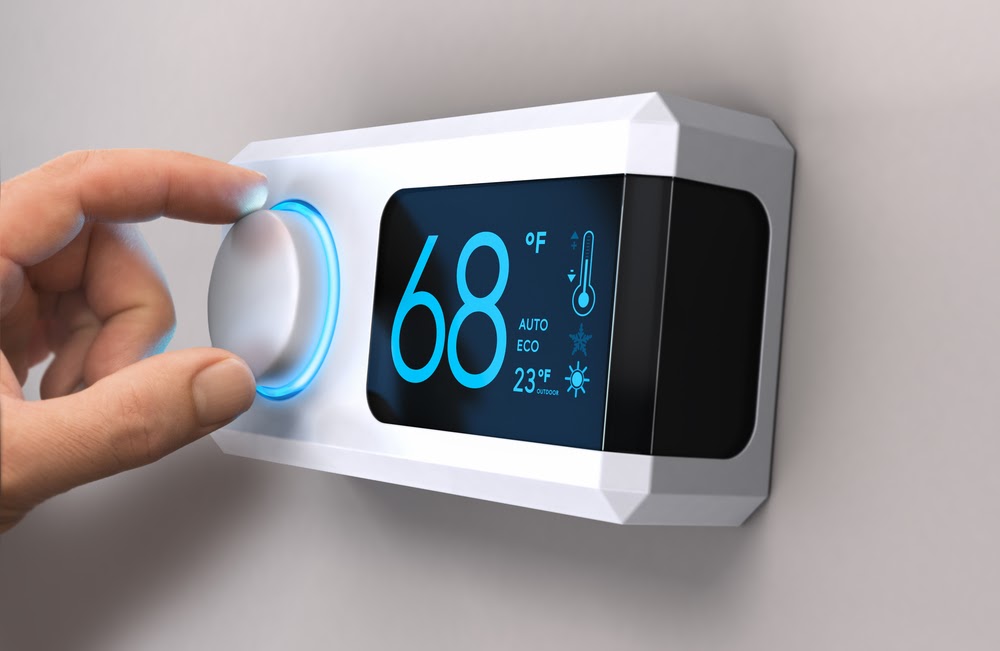A Guide to Optimal Thermostat Settings
It’s estimated that heating and cooling your home accounts for about 42% of your annual energy bill. If you’re interested in saving money on your monthly utility bills, adjusting the way you use your heater and the air conditioner is a great place to start.
This is especially important now that families are practicing social distancing by spending more time at home during the coronavirus. The more time you spend at home, the more you will rely on your heating and cooling system to keep you comfortable so different ways of saving energy at home during Coronavirus closings are very important these days.
If you don’t make changes now, your energy bill could skyrocket over the next few months. The key is understanding the optimal thermostat settings that will keep you comfortable all year long. Here’s what you need to know:
What Temperature Should I Set My Thermostat to in Hot Weather?
To drastically lower your energy bills, it’s important to know what temperature to keep your house when the weather is hot. The U.S. Department of Energy (DOE) recommends adjusting your thermostat to 78 degrees Fahrenheit when you are at home in hot temperatures.
If you plan on being out of the house for more than a few hours or days due to the present Coronavirus situation, turn the temperature up a few degrees higher before you go. This ensures that your air conditioner is not wasting energy on cooling an empty home.
This is just the average thermostat setting recommended by the DOE for summer temperature. You may need to adjust the temperature up or down slightly depending on the climate you live in. But in general, you should try to keep the temperature inside your home as close to the temperature outside as possible without sacrificing your comfort. The closer these two temperatures are to each other, the less energy your air conditioner will consume to keep you comfortable.

What is the Best Heat Temperature For My House in Cold Weather?
The best temperature to keep your house if the weather is cold outside is 68 degrees Fahrenheit. However, this is only the ideal heating temperature for the hours that you are at home and awake. Now that you and your family are spending so much time at home due to Coronavirus isolation and quarantine policies, this means it is most of the time.
If you plan on leaving for an extended period of time—or if you are going to sleep—the recommended temperature for the heater is 58 degrees Fahrenheit. Turning your thermostat down to 58 degrees Fahrenheit during the hours you are asleep can reduce your heating costs by up to 10% per year.
Remember, you may need to adjust these settings slightly depending on the particular weather in your area and your comfort level.
Is It Better to Leave Your Thermostat At A Constant Temperature?
Many people believe that keeping the thermostat at the same temperature at all times is the best way to save energy, but that’s not the case. Keeping your thermostat at a constant temperature is not important—adjusting the temperature based on the time of day and your schedule is the best way to conserve energy and save money.
It’s also important to note that turning your air conditioner down to a low setting is not a good way to quickly cool down your home. This bad habit will result in excessive cooling and wasted energy. Instead of dialing the temperature all the way down, adjust it to your normal setting and wait patiently for your home to cool off.
Why Should You Install A Programmable Thermostat?
Manually adjusting the temperature on your thermostat is an option, but it’s much easier to maintain optimal thermostat settings with a programmable thermostat.
A programmable thermostat is a smart home device that allows you to preset temperatures for different times of the day or week.
For example, if the outside temperature is high, you can adjust the settings so that the temperature on your thermostat automatically increases if your comfort level is not heavily affected. Program the thermostat so that the air conditioner will automatically start to cool the house down towards the end of the day.
Programmable thermostats can also be controlled from an app on your smartphone so you can adjust the temperature even when you are away from home. Using one of these smart home devices makes improving the energy efficiency of your heating and cooling system easier than ever before.
Use Your Thermostat Wisely
Adjusting your thermostat based on the recommendations in this guide can help you conserve energy, lower your monthly utility bills, and reduce your carbon footprint. The best part is you can reap these rewards without sacrificing your comfort! These days it is better to be prepared to save energy and save consequently money on your bills!


